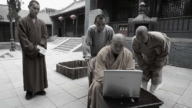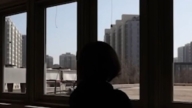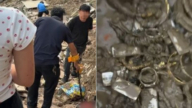【新唐人2011年2月9日讯】上个月(一月)底,上海市发生一起医病冲突事件,病患家属因不满院方报警,持刀冲入医院,最后造成十名医护人员受伤,其中更有六人重伤。事实上,美国《纽约时报》曾专文揭露中国医病关系紧张的问题。在中国,医院已成为危险工作场所。
美国《纽约时报》报导,去年7月,沈阳市的27所公立医院联合声明,目前他们最需要的是能在大门口执勤的警察,以防止不满的病人及家属冲进医院攻击医护人员。
而上海《东方网》报导,一月31号,上海市新华医院就发生一起因医疗纠纷,演变成的流血冲突事件。病患(刘永华)在新华医院病逝,家属在急诊室门口设灵堂、拉布条抗议,院方报警处理,一名家属因不满院方报警,持刀冲入医院,造成十名医护人员受伤,其中更有六人重伤。
根据卫生部公布的资料显示,光是2006年一整年,全中国就有超过5500的医护人员遭受病人或家属攻击。比如六月在山东,一位病患的儿子因不满父亲在医院过世,刺杀了病患的医师。另外在陕西,愤怒的家属对医院纵火表示不满,造成三名医师严重烧伤的悲剧。
据了解,自1990年代起,中国各级医院必须自谋生路。公元2000年,中国医疗制度被世界卫生组织列为最不公平的体系之一,在191个国家中排名第188名。每五名病患就有近两人无法接受治疗。十人中仅一人有医疗保险。
《纽约时报》认为,层出不穷的医病纠纷事件,反映出民众对现今的中国医疗制度普遍感到不满。比如现今中国仍有近半数医生只有高中学历,许多农村医生甚至只有初中学历,医疗质量偏低。更由于基础医疗资源不足,公立医院因而不断调涨医疗费用,民众怨声载道。
此外,药品早已成为中国各级医院的第二大收入来源,过去10年来,卫生部虽曾先后23次勒令医院调降特定药品的价格,但研究指出,社会上长期形成的医生乱开药,或开药过量,检查费昂贵,或不肖医护人员收受药厂回扣等弊端没能获得解决,因此民众家庭总支出中的医疗费用支出比例只小幅回落,从2003年的8.7%降到2008年的8.2%。
如同其他城巿一般,沈阳市正积极寻求避免医疗纠纷的方法,包括考虑在医院内部建立民众调解中心等,不过2009年当地仍爆发152起严重的医病冲突事件。
《纽约时报》也指出,中共官方正密切监控,避免单一医疗纠纷事件扩大,进而影响到中共政权。
新唐人记者曾耀贤、薛莉综合报导
In Jan., a violent medical conflict occurred in Shanghai.
The family member of a patient was discontent
with the hospital for calling the police.
They rushed into the hospital with a knife,
injuring 10 medical workers, with 6 critically wounded.
New York Times published a special article to expose
the tensions between Chinese doctors and patients.
In China, hospitals became a dangerous place to work.
New York Times reported that in July 2010,
Shenyang’s 27 public hospitals declared that
what they needed the most were the police on duty
to prevent discontent patients and their families
from rushing into hospitals to attack medical staff.
Shanghai’s Oriental Net reported, on Jan. 31,
a medical dispute escalated into a bloody incident.
Patient Liu Yonghua died at local Xinhua Hospital.
His family members set up a mourning hall in front of
the emergency room door, and protested with banners.
The hospital reported this to the police.
Because if it, a discontent relative rushed into
the hospital armed with a knife, injuring a dozen
and severely wounding 6 medical workers.
According to the Public Health Bureau, in 2006 alone,
there were over 5,500 health workers attacked by
patients or their family members.
e.g., in June 2006 in Shandong, a discontent son
of a patient who died in a hospital killed the physician.
In Shaanxi, angry relatives set fire to a hospital,
causing 3 physicians seriously burnt.
Since the 1990’s, Chinese hospitals started to fend
for themselves.
In 2000, the Chinese medical system was listed by
WHO as one of the most unfair systems, ranking
188 among 191 countries.
Nearly 2 out of 5 patients cannot afford treatments.
Only 1 out of 10 people have medical insurance.
New York Times analyzes that increasing cases of
doctor-patient disputes reflect the public’s discontent
with the current health care system in China.
Nearly half of the doctors in China only have
a high school education; many rural doctors
even have only junior high school education.
The health care quality in China is low.
Due to the lack of basic medical resources,
public hospitals continue to raise prices.
Drugs are the hospitals’ 2nd largest source of revenue.
In a decade, the Health Ministry ordered hospitals
to reduce prices of some specific drugs 23 times.
However, research indicates there are long-time
medical malpractices of doctors such as prescribing
indiscriminately, over-prescription, high examination
fees, or unscrupulous pharmaceutical rebates.
As these remain unresolved, the percentage of
household expenditures on health care declined
slightly, from 8.7% in 2003 to 8.2% in 2008.
Like many other cities, Shenyang is actively seeking
ways to prevent medical disputes,
including establishing mediation centers in hospitals.
However, in 2009, there were still 152 severe conflicts.
New York Times pointed out, Chinese authorities
are closely monitoring the situation,
to prevent the escalation of medical disputes
from affecting the Communist regime.
NTD reporter Zeng Yaoxian






























